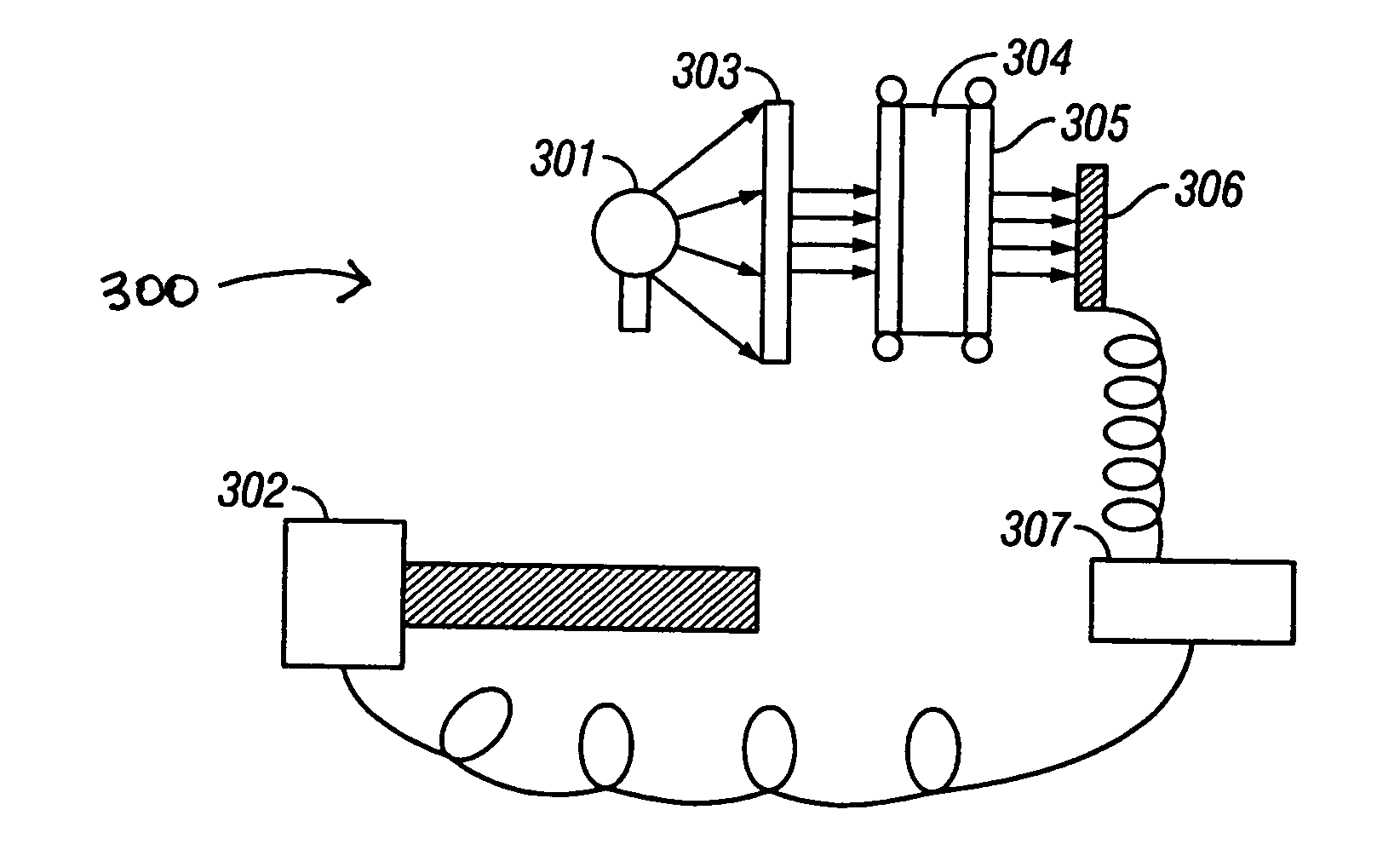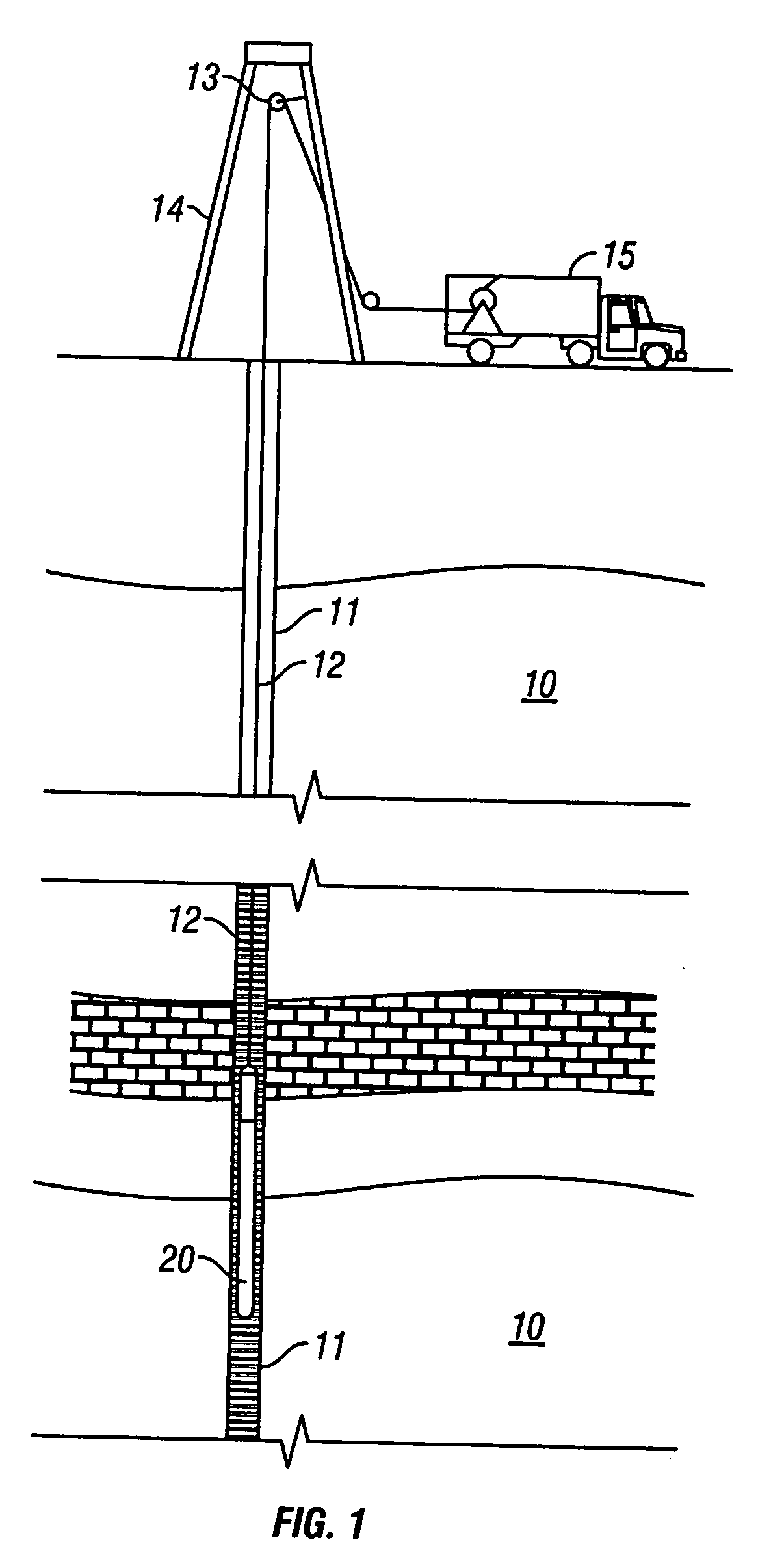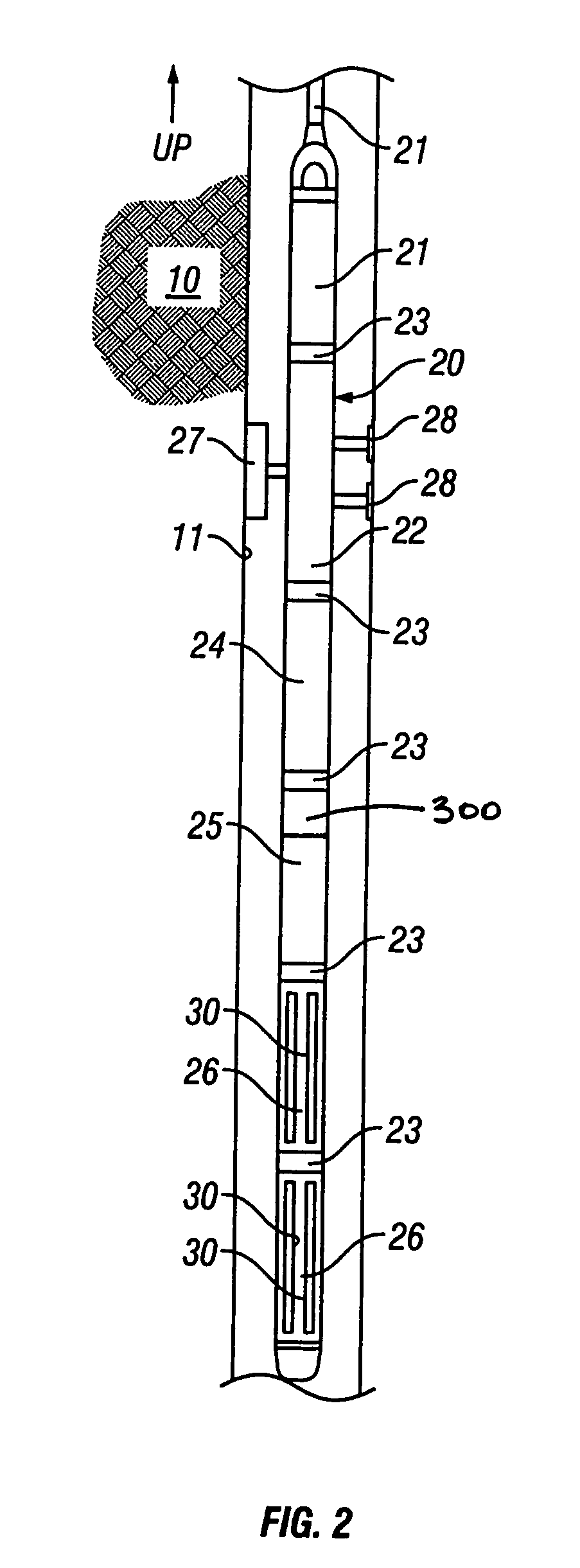Method and apparatus for determining an optimal pumping rate based on a downhole dew point pressure determination
a technology of dew point pressure and pumping rate, which is applied in the field of spectrometry, can solve the problems of limited existing techniques for maintaining sample formation pressure, inconvenient pretension or compression springs, and reduced ability to evaluate the actual properties of formation fluid
- Summary
- Abstract
- Description
- Claims
- Application Information
AI Technical Summary
Benefits of technology
Problems solved by technology
Method used
Image
Examples
Embodiment Construction
[0033] Baker Atlas provides the Reservoir Characterization Instrument.TM. (RCI.TM.) to evaluate samples representative of a hydrocarbon reservoir. The RCI.TM. is used to measure reservoir pressure as well as collecting samples from the reservoir. The samples are processed in pressure / volume / temperature (PVT) laboratories to determine the thermodynamic properties and relationships (PVT data) which are used to infer the properties of the formation from which a sample is taken. The quality of this data is directly dependent on the quality of the sample collected by the RCI.TM.. Some of the most difficult samples to collect are near critical hydrocarbons, retrograde gas, and wet gas. The dew point of the gas sample is a very important parameter in terms of the sample quality. If the sample is dropped below the dew point it could loose substantial amounts of liquid hydrocarbon in the reservoir or in the tool and hence severely alter its composition. One of the tools that is run in conjun...
PUM
 Login to View More
Login to View More Abstract
Description
Claims
Application Information
 Login to View More
Login to View More - R&D
- Intellectual Property
- Life Sciences
- Materials
- Tech Scout
- Unparalleled Data Quality
- Higher Quality Content
- 60% Fewer Hallucinations
Browse by: Latest US Patents, China's latest patents, Technical Efficacy Thesaurus, Application Domain, Technology Topic, Popular Technical Reports.
© 2025 PatSnap. All rights reserved.Legal|Privacy policy|Modern Slavery Act Transparency Statement|Sitemap|About US| Contact US: help@patsnap.com



